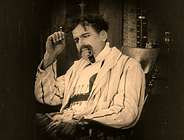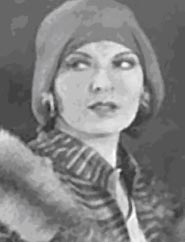
After having seen in the “Schloss”, “The Count”, a film directed by Herr Charles Chaplin in the silent year of 1916, this German Count must enumerate both the accurate and inaccurate elements in order to prevent the many misunderstandings that still persist among the longhaired around the world and the provincial aristocracy, even after centuries.
Inaccurate :
· A genuine Count’s secretary never accompanies his master to a ball
· The free style dancing is not allowed in a ball
· In an elegant and aristocratic dinner, ordinary foods such as watermelon or spaghetti never are served.
· A wealthy heiress never dances with a man in civvies
· A wealthy heiress usually is not young, thin or charming.
Accurate:
· The servants always cause problems for their masters
· The aristocratic floors always are waxed
· The aristocratic servants wear slovenly wigs
· A genuine Count wears top hat and matching moustache
Those were necessary clarifications so in this way it does depict aristocratic business in the correct manner.
And now, if you'll allow me, I must temporarily take my leave because this German Count must continue in this aristocratic corporate spirit.
Herr Graf Ferdinand Von Galitzien
-/-
Después de haber sido proyectado en el “Schloss” el filme dirigido por Herr Charles Chaplin “The Count”, éste Conde germánico se ve en la obligación de enumerar los hechos reales y ficticios reflejados en el mencionado filme para de esta forma no contribuir a los malentendidos que todavía persisten, tras largas centurias, entre los melenudos del mundo entero hacia la provinciana aristocracia.
Falso:
- El secretario de un auténtico Conde jamás acompaña a su amo a un baile
- El baile suelto no está permitido en un baile aristocrático que se precie
- Durante una elegante y aristocrática cena, jamás se servirán comidas tan ordinarias como sandía o spaghetti
- Una rica heredera jamás baila con un señor vestido de calle
- Una rica heredera, habitualmente ni es joven, ni delgada o incluso encantadora
Verdadero:
- Los sirvientes siempre causan problemas a sus amos
- Los suelos aristocráticos siempre están bien encerados
- Los sirvientes aristocráticos llevan desgarbadas pelucas
- Un auténtico Conde siempre lleva sombrero de copa y bigote a juego
Han sido estas necesarias aclaraciones para reflejar de forma certera ciertos intereses aristocráticos.
Y ahora si me lo permiten les tengo que dejar momentáneamente, pues este conde germánico tiene que continuar con el corporativismo aristocrático.
Herr Graf Ferdinand Von Galitzien







